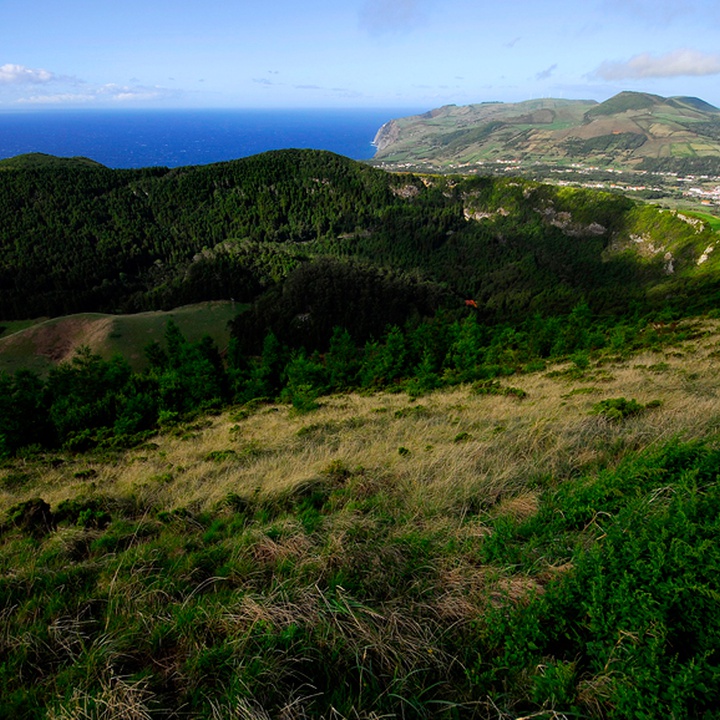Text size:
Geodiversity


Graciosa island is about 2.5 million years old and its eruptive history allows to define three volcanological units responsible for the formation of the island, namely the Volcanic Complex of Serra das Fontes (the oldest part of the island), the Volcanic Complex of Serra Branca and the Volcanic Complex of Vitória - Vulcão Central (central volcano). However, low and soft reliefs prevail, with peak altitudes between 374 and 405 metres.
The Vulcão Central, located in the southeast area of Graciosa, is the most impressive volcanic form of the island. After its caldera´s formation, there was an important Hawaiian episode in this volcano that ended with a collapse in the caldera’s inside, followed by the draining of lava through the Furna do Enxofre (cave).
The thermal springs of Carapacho and the Baía dos Homiziados, located in the southeast end of the island, and some gaseous fumes represent the secondary volcanism in Graciosa Island. However, the main degasification field is inside Furna do Enxofre, which includes the existence of a fumarole and intense degasification.
The most recent eruption of the island was less than 2000 years ago and built a scoria cone on top of the Serra Dormida, the Pico Timão.

